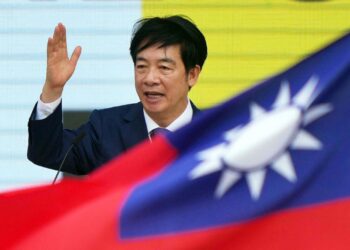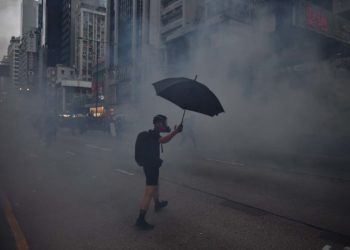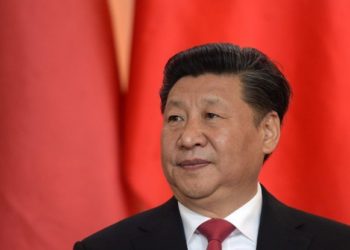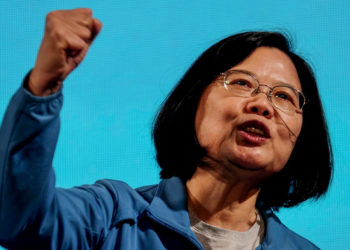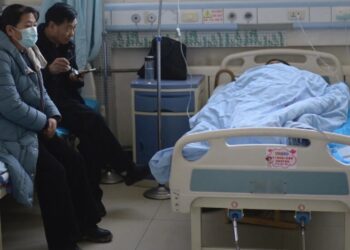The Chinese government seems to have been caught off-guard by the outpouring of criticism of its massive campaign of repression of Uyghurs and other Turkic minorities. Unprecedented media investigations have documented a rapidly expanding network of well over 100 secret extra-legal internment camps in East Turkestan in the northwest of China, holding at least 10 percent of the Uyghur population.
Since the U.N. first spoke out about the camps as a “no-rights zone” in August and calls for sanctions have grown more urgent, the Chinese government has launched a wave of external propaganda to deflect criticism.
Forced Labor
It is now clear that forced labor is a critical component of the “vocational training” which the Chinese government claimed it was conducting in an attempt to sanitize the image of the concentration camps. This should come as no surprise given the long history of forced labor in China’s re-education-through-labor camps, which Beijing claimed to have abolished in 2013.
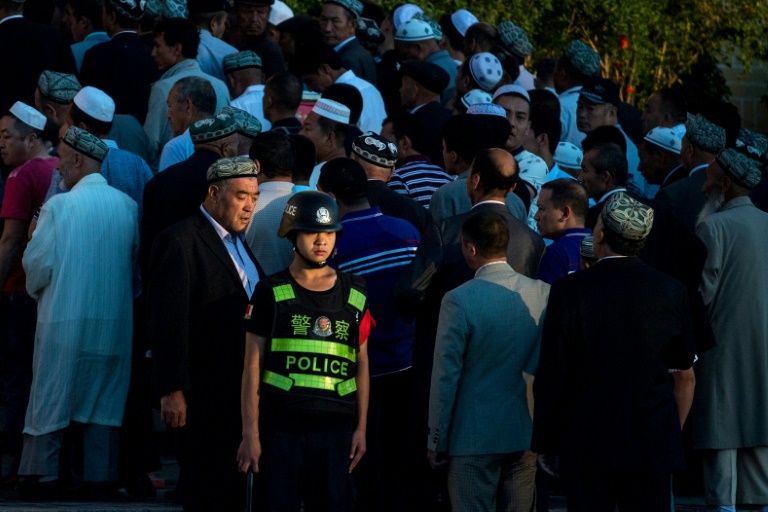
The Uyghur Human Rights Project has documented a widespread, decades-long program of rural forced labor in the southern part of East Turkestan. Only in 2017 did the government announced an end to “hashar,” the system of compulsory rural labor on government infrastructure and agriculture projects.
The police routinely sends Uyghurs from rural areas to “vocational training” programs during the winter months to “prevent men from taking part in activities that affect social stability.” The classes are much the same as those within the camps, focusing on ideological indoctrination and the Chinese language. China’s vocational training programs elsewhere have also been accused of involuntary labor abuses.
The new camp system that has locked up as many as 2 million people since April 2017, documented by satellite imagery, was not built and run by the government’s vocational training department. In fact, the budget for vocational training in East Turkestan actually dropped in 2017, as the camps were being constructed, while the budget for security facility construction more than doubled.
The concentration camps and the factories connected to them in East Turkestan are run by the Ministry of Justice, the same ministry that ran the pre-2013 “re-education-through-labor” system for petty criminals and political dissidents. Evidence suggests that the government was planning to incorporate forced labor into these camps from the beginning, with construction bids calling for holding “vocational training” and “re-education” centers in the same facility, outfitted like prisons.
‘Training Centers’
According to recent media reports, those working in the factories connected to the camps are given little or no pay and are not permitted to leave. One company was featured in the Chinese media, following U.N. criticism.
The report attempted to depict the factory, housed inside a camp in the town of Hotan, as a training center. Hetian Taida, the featured company, is a source for at least one American company, Badger Sportswear, which announced December 17 that it was suspending sourcing from the company while an investigation is conducted.
https://twitter.com/badger_sport/status/1074877858445697024
Other Chinese companies include “vocational training center” in their publicly listed addresses.
Given the extreme secrecy of the police state in East Turkestan, where diplomats have been refused access, and police caravans follow foreign journalists that attempt to conduct on-the-ground reporting, companies in the textile and other sectors should halt all sourcing from China unless they can affirmatively verify that products are not made by ethnic and religious prisoners.
Supply-chain verification companies should be censured for failing to raise the alarm long ago, in the face of abundant, publicly available information about the horrific campaign of mass detentions and ethnic cleansing affecting all Turkic Muslim peoples in East Turkestan.
Cover-Up Schemes
Framing extrajudicial detention and forced labor as “vocational training” appears to be part of the government’s effort to hide the existence and nature of the camps.
It appears that some camps are removing barbed wire from their walls. Local residents are reportedly being instructed not to speak about the camps, in an apparent attempt to prepare for inspection teams that might include foreigners. According to an internal document obtained by the magazine Bitter Winter, families of concentration-camp detainees are being warned not to “spread rumors” or in any way contradict the policies of the Party.
The most disturbing cover-up scheme is the transfer of hundreds of thousands of detainees, under conditions of great secrecy, to prisons in distant regions and provinces, including Inner Mongolia and Heilongjiang in China’s northeast.
In October 2018, railroads were closed to passenger traffic as large numbers of people were transported out of East Turkestan. It is now reported that the number transported is about 500,000, a significant proportion of those detained.
Prison guards from other provinces are receiving training on how to “handle” Uyghur prisoners. Those involved in the transportation of prisoners are threatened with a three-year prison term if they reveal anything about the operation. If large numbers of Uyghurs have been moved to other locations in secrecy, it constitutes an escalation of the already extreme human rights crisis.
Foreign Inspection
If foreign inspection teams are indeed allowed to visit East Turkestan, they must understand the government’s preparation efforts. The U.N., foreign governments, and NGOs should investigate not only forced labor but also prisoner transport.
If confirmed, this operation constitutes one of the largest forced transfers of an ethnic group in the past 70 years anywhere in the world. Governments and private corporations must be vigilant and recognize that any Chinese government-facilitated inspection tour of East Turkestan will be designed to serve as an extension of the cover-up.
Disclaimer: The views and opinions expressed here are those of the author and do not necessarily reflect the editorial position of The Globe Post.


